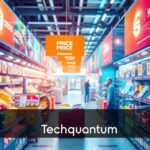Autonomous robots are changing many parts of our lives, like healthcare and manufacturing. But, this new tech brings up many ethical questions. It’s important to think about these issues as we move forward with ethical robotics.
Important topics include how AI makes decisions, who is responsible for robots, and how they affect our lives. We aim to make technology that respects human rights and privacy. In healthcare, for example, robots and AI can help a lot, but we must talk about their ethical sides.
Looking into responsible AI can help us understand the challenges we face. For more info, check out this resource on ethical AI.
Key Takeaways
- Understanding the ethical implications of autonomous robots is vital for responsible development.
- Transparency in AI decision-making is a key concern for ethical robotics.
- Accountability for the actions of autonomous robots must be established.
- Privacy and security are critical issues in the application of robotics technology.
- Ongoing discussion about the societal impacts of robots is essential as they become more integrated into daily life.
- Integrating ethics into robotics helps ensure respect for human rights and societal norms.
The Importance of Ethics in Robotics
The role of ethics in robotics is huge. As AI becomes part of robots, we face both good and bad sides. It’s key to make sure these systems are used right, thinking about the risks of being on their own.
Robotics ethics helps guide people making these systems. It makes sure they respect human rights, keep us safe, and protect our privacy. These rules are important in real life, where trust matters a lot. Without them, AI could be used wrongly, hurting people and society.
Adding ethics to how we make robots helps us develop AI responsibly. This means thinking about how different groups of people will be affected. For more on how ethics affects AI, check out navigating the challenges of bias and privacy.
Working together to keep ethics in robotics is key to a future where new tech and values match up.
Understanding Autonomous Robots
Autonomous robots work on their own, using advanced technology and AI. They can do many jobs, like working in factories, farming, and driving cars. It’s important to know how they make decisions and work with their surroundings.
Take robots for farming, like the cherry tomato harvester from Inaho. They use better AI and cameras to pick twice as fast and accurately. This shows how these robots can make farming more efficient.
How humans and robots work together is key to their success. Tools like those from Vemprala et al. make it easier for people to use robots in factories. Also, working with companies like Scaled Foundations and Microsoft, they’re adding chatbots to robots to improve how they talk to each other.
Smart factories show why we need to understand autonomous robots. They bring together AI, IoT, and big data to make factories smarter. But, there are still issues with AI being reliable in complex places.
Learning about autonomous robots helps us work better with them. This leads to new ideas that solve problems in many areas.
| Aspect | Traditional Systems | Autonomous Robots |
|---|---|---|
| Human Intervention | Required for operation | Minimal or none |
| AI Integration | Limited use of AI | Advanced AI systems |
| Decision-Making | Human-driven | Data-driven algorithms |
| Application Areas | Specific tasks | Diverse applications (e.g., agriculture, manufacturing) |
| Interaction | Manual controls | Intuitive interfaces |
Key Ethical Challenges in AI and Robotics
The rise of autonomous robots highlights several ethical challenges. These challenges are crucial for the responsible use of AI technologies. They affect privacy, decision-making, and society as a whole.
Privacy Concerns and Surveillance
Autonomous robots often gather sensitive personal data. This raises big privacy concerns, especially in surveillance settings. With robots using advanced facial recognition, the risk of misuse of personal data grows.
This could lead to unwarranted surveillance, violating individual rights. It’s important to think about how these issues affect privacy laws. We need to protect citizens from being watched too closely.
Decision-Making and Accountability
Decisions made by autonomous robots raise big ethical questions. If a robot causes harm, figuring out who is to blame is key. For instance, if an autonomous car gets into an accident, who is responsible?
Without clear rules, trust in these technologies could drop. It’s vital to make frameworks that explain how these machines work and their actions. This is crucial in areas like healthcare and law enforcement, where decisions can change lives.
| Key Areas | Ethical Questions | Potential Solutions |
|---|---|---|
| Privacy | How to protect personal data from misuse? | Implement robust data protection policies. |
| Accountability | Who is responsible for autonomous decisions? | Establish clear accountability frameworks. |
| Societal Impact | What effects do robots have on social structures? | Conduct regular assessments and engage public discourse. |
The Role of Transparency in Robot Development
Transparency is key in making ethical AI systems. When engineers show how algorithms and decisions work, we see potential biases and methods. This openness makes it easier to check how robots work and why they make certain choices. It helps build trust in technology, which is crucial for robots to be part of our daily lives.
In fields like healthcare and criminal justice, robots’ decisions can change lives. For example, if a robot helps diagnose diseases or assist in law enforcement, we need to know how it works. By being open about how robots work, developers show they follow ethical rules. This builds trust with users and the public.
Looking into robot development, we see that transparency does more than just help with ethics. It also makes AI solutions work better. Without it, we can’t trust these systems as much. Working towards true transparency in AI will help us trust technology more and lead to responsible innovation.
Bias and Discrimination in Robotics
The growth of autonomous robots brings up big worries about bias and discrimination in AI. These biases can change how decisions are made, especially when AI learns from biased data. They often mirror old prejudices, hurting marginalized groups. It’s key to understand where these biases come from to make robotics fairer.
How Algorithmic Bias Affects Outcomes
Algorithmic bias can really change how AI works in different areas. A 2023 study showed that AI tools made gender and racial stereotypes worse. This shows how biases in AI can affect real life.
Old biases in AI can make some groups more favored, leading to unfair results. For example, AI in hiring might pick men over women because of past biases. This affects not just jobs but also law enforcement and healthcare, where biased AI can harm vulnerable people.
Strategies for Mitigating Bias in AI Systems
To fight algorithmic bias, we need a complex plan. Using diverse data to train AI is key to fight old prejudices. Getting feedback from experts like ethicists can help spot biases. Companies should check their AI for bias often to make sure it’s fair.
Using governance tools helps follow ethical rules and lower bias. Creating a fair AI culture and designing responsibly can change the tech world. This way, AI helps everyone fairly.

The Impact of Robotics on Employment and Society
Robotics is changing jobs in many areas. It can replace some jobs but also creates new ones. This robotics impact makes us think about how it affects people and communities.
New tech makes things more efficient but also brings up big questions about work’s future. Leaders need to find ways to make this change fair for everyone. This means helping workers keep up with new skills through education and training.
Helping workers who lose their jobs is key. We can offer them help and training to get new skills. This way, everyone can benefit from robotics, making sure no one gets left behind.
| Sector | Positive Impact | Negative Impact |
|---|---|---|
| Manufacturing | Increased efficiency and productivity | Job displacement for low-skilled workers |
| Healthcare | Improved patient care through robotic assistance | Potential reduction of support roles |
| Transportation | Enhanced logistics and delivery systems | Loss of jobs in traditional driving roles |
| Retail | Streamlined processes and operational efficiency | Decreased need for cashiers and stock clerks |
As robotics grows, we need to keep talking about how it changes jobs and society. We must think about how to make sure it brings new benefits and respects human values. Looking into more resources, like automation and its effects on work, can help us understand this better.
Global Regulations and Guidelines for Ethical Robotics
Autonomous robots are becoming more common in our lives. This makes it crucial to have strong rules and ethical guidelines. Countries are creating laws to deal with issues like safety, privacy, and who is responsible. These laws help with responsible innovation and protect our rights and interests.
How countries handle these issues varies a lot. Some are leading the way in AI policy, while others are falling behind. This leads to uneven rules that can make global standards less effective. We need to talk across borders to make rules that work for everyone and share best practices.
Groups like industry leaders, policymakers, and scholars are key in pushing these changes forward. Working together can start important talks about ethics in robotics. We must push for rules that are open and involve everyone. This way, we can tackle the ethical issues that come with robots.
| Country | Current Status of Regulations | Focus Areas |
|---|---|---|
| United States | Emerging regulations | Safety, liability, AI policy |
| European Union | Comprehensive framework | Privacy, accountability, global standards |
| China | Rapid development | Innovation, government oversight |

Robotics and Algorithmic Accountability
Today, we see a big push in robotics and artificial intelligence. This means we must focus on making sure these systems are accountable. As robots and AI systems become more common, we need to think about their use. Questions about responsible robotics and ethics come up a lot. We need rules to handle the from their choices.
The Need for Regulatory Frameworks
Setting up rules is key to making sure robotics is ethical. Without rules, it’s hard to know who is responsible. This can lead to bad outcomes from robot decisions. Around the world, people are starting to work on these issues. By focusing on ethical AI implementation, we can make sure creators are responsible for their work. As robots get smarter, working together will help us make sure they’re used right.
Let’s look at a table that shows why we need rules for robotics:
| Aspect | Challenges | Potential Strategies |
|---|---|---|
| Transparency | Lack of understanding about decision-making processes in AI | Open documentation and clear reporting standards |
| Responsibility | Ambiguous accountability in case of failures | Defined legal frameworks assigning liability |
| Bias | Risk of perpetuating bias in decision systems | Regular audits and algorithmic testing |
| Privacy | Pervasive surveillance and data misuse | Strong data protection laws and regulations |
Talking about making robots accountable is important. We need to discuss ethical issues and support responsible use.
Human-Robot Interaction: Building Trust and Understanding
Getting humans and robots to work well together is key to trusting AI. As robots become part of our daily lives, it’s vital to understand them better. This helps people feel safe and confident around these machines. Making communication clear and designs easy to use is important for a good experience that builds trust.
By November 2022, over 100 million users had tried ChatGPT. By February the next year, that number jumped to 1.0 billion monthly visits. This shows how much we rely on AI and the need for smooth interactions with robots. Projects like those between Scaled Foundations and Microsoft are adding better language skills to robots.
In industries like smart factories, using AI can be tricky. Getting robots like Pepper ready for real-world use shows how crucial talking to users is. It’s important to make sure robots fit with what society values and what users need.
Research at Stanford University found that AI can make communication better. This could help not just in tech but also in social science, where knowing how people act is crucial. The challenges in complex settings show we need AI that’s reliable and strong.
Building trust in AI means making sure humans and robots work well together. The impact of these changes on society is huge, shaping how we interact with technology and bridging the gap between humans and machines. To learn more about how humans and robots are connecting, check out studies on human-robot interaction.
Conclusion
The growth of robotics is changing the future in big ways. It brings many chances but also big ethical issues that need thought. Making sure robots are designed with ethics in mind is key to gaining public trust. This trust is vital for making sure new tech helps people, not just the few.
Using responsible AI and being open about how it works is important. Developers, regulators, and the public must work together. This teamwork will guide robotics in a way that makes life better for everyone.
Thinking about ethics and responsibility in robotics is crucial. It helps make sure tech meets our needs. By doing this, we can create a future where robots help us all. For more on how tech is changing our world, check out this article on technology advancement.
FAQ
What are the primary ethical considerations when developing autonomous robots?
Key ethical thoughts include making AI decisions clear, being accountable for robot actions, and thinking about how robots fit into our lives. These ideas help make sure robots are developed and used responsibly. They also protect human rights and privacy.
Why is transparency important in robotics?
Transparency is key because it builds trust, makes sure people are accountable, and helps people understand how robots work. In important areas like healthcare and justice, being open can really change lives for the better.
How do ethical frameworks help mitigate risks associated with robotics?
Ethical frameworks help developers and groups make sure robots respect human dignity, safety, and privacy. They set rules to spot and handle risks, making sure AI is developed responsibly.
What are the risks of algorithmic bias in autonomous robots?
Algorithmic bias can cause unfair results and discrimination, especially if the data used to train the AI is biased. This can hurt certain groups of people, showing the need for fair AI and ongoing checks on ethics.
What impact do autonomous robots have on the workforce?
Robots can change jobs, but they might also create new ones. It’s important to think about how this affects society. We need to look at how to help workers who lose their jobs and how to adapt to new roles.
Why are global regulations needed for autonomous robots?
Global rules are needed to deal with safety, privacy, and accountability issues with robots. Having clear, worldwide laws helps encourage good innovation. It also protects people’s rights and interests.
What role does accountability play in the development of autonomous robots?
Accountability is crucial to make sure robots act right. Clear rules help figure out who is responsible for a robot’s decisions. This can stop bad outcomes and build trust in robotics.
How can effective human-robot interactions enhance public trust?
Good human-robot interactions come from clear communication, designs that are easy to use, and robots that listen to people’s needs. Talking to users to understand their worries is key. It helps make sure robots work well without hurting our values.
Source Links
1 . https://medium.com/daniel-parente/the-invisible-revolution-how-ubiquitous-computing-will-shape-our-future-a0fdf1e4eeac
2 . https://elblog.pl/2024/09/07/chinas-ambitious-ai-aspirations-amid-global-concerns/
3 . https://healthcare-in-europe.com/en/news/personalised-robot-rehabilitation-stroke.html
4 . https://golf.com/gear/irons/mizuno-jpx-925-hot-metal-irons-proving-ground/
- My Guide to Understanding Data Centre Architecture: Core Components Every IT Pro Should Know
- Wazuh Home Network Setup: A Step-by-Step Guide
- Quantum Computers Decrypting Blockchain: The Risks and Implications
- Wazuh: Enterprise-Grade Security for Your Business
- Wazuh for Beginners: A Comprehensive Guide
Related posts:
 How AI is Revolutionizing the E-commerce Industry
How AI is Revolutionizing the E-commerce Industry
 The Role of Quantum Computing in Drug Discovery
The Role of Quantum Computing in Drug Discovery
 Quantum Algorithms: A Deep Dive into Shor’s Algorithm
Quantum Algorithms: A Deep Dive into Shor’s Algorithm
 How to Create High-Quality Synthetic Media Using AI
How to Create High-Quality Synthetic Media Using AI
 How to Automate Cybersecurity Threat Detection Using AI
How to Automate Cybersecurity Threat Detection Using AI
 CISSP Domain 3: Security Architecture and Engineering
CISSP Domain 3: Security Architecture and Engineering
